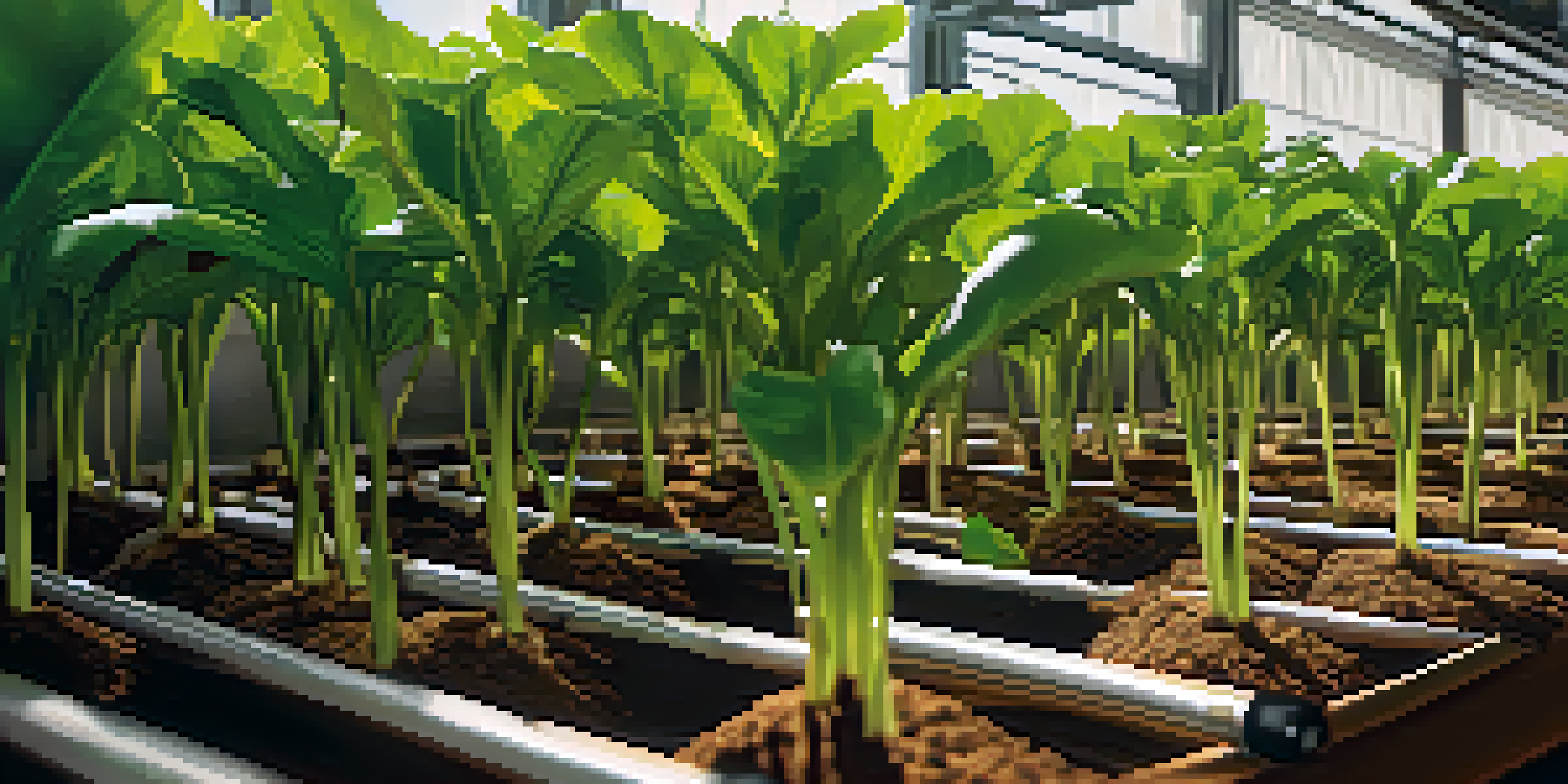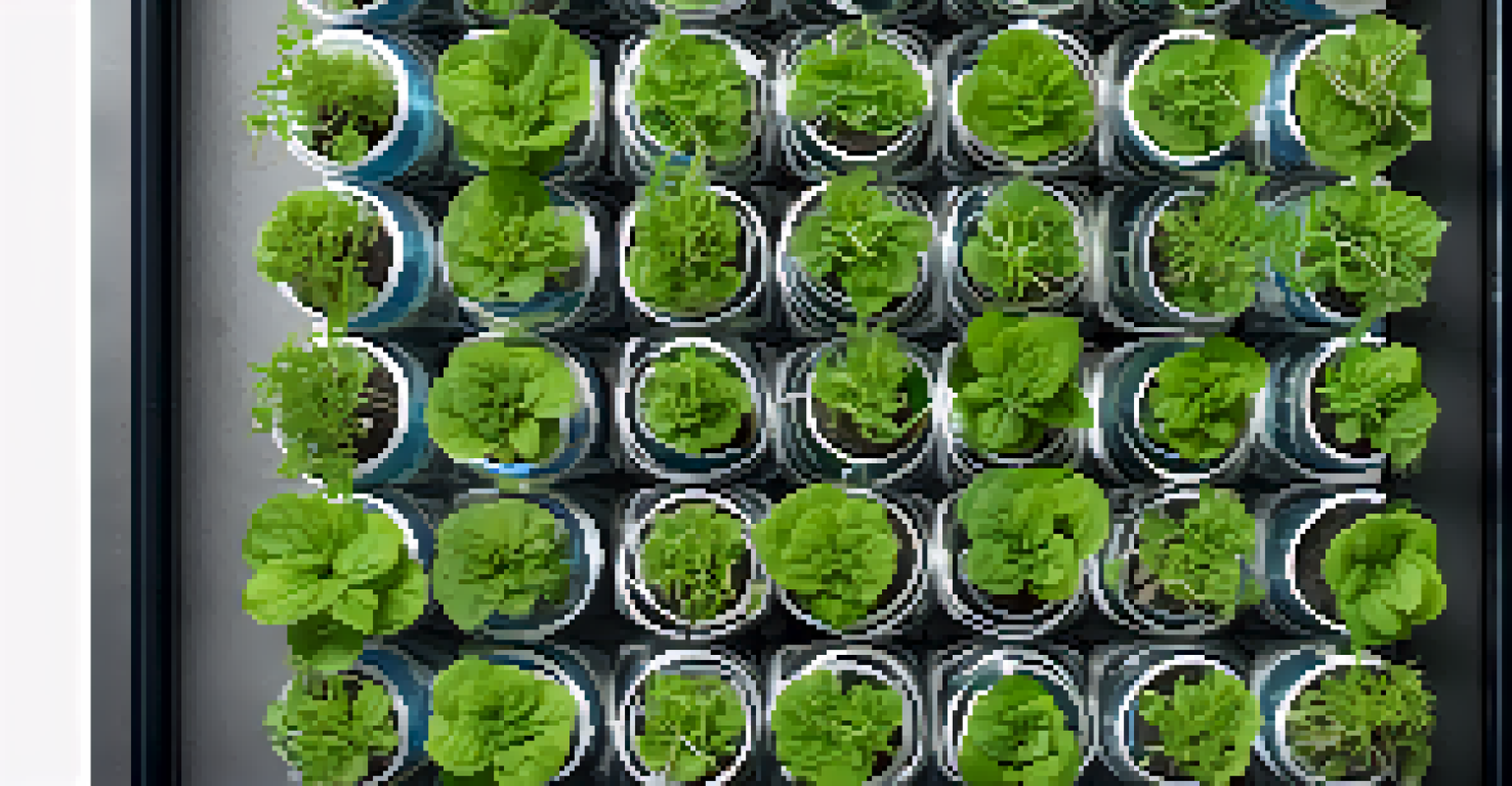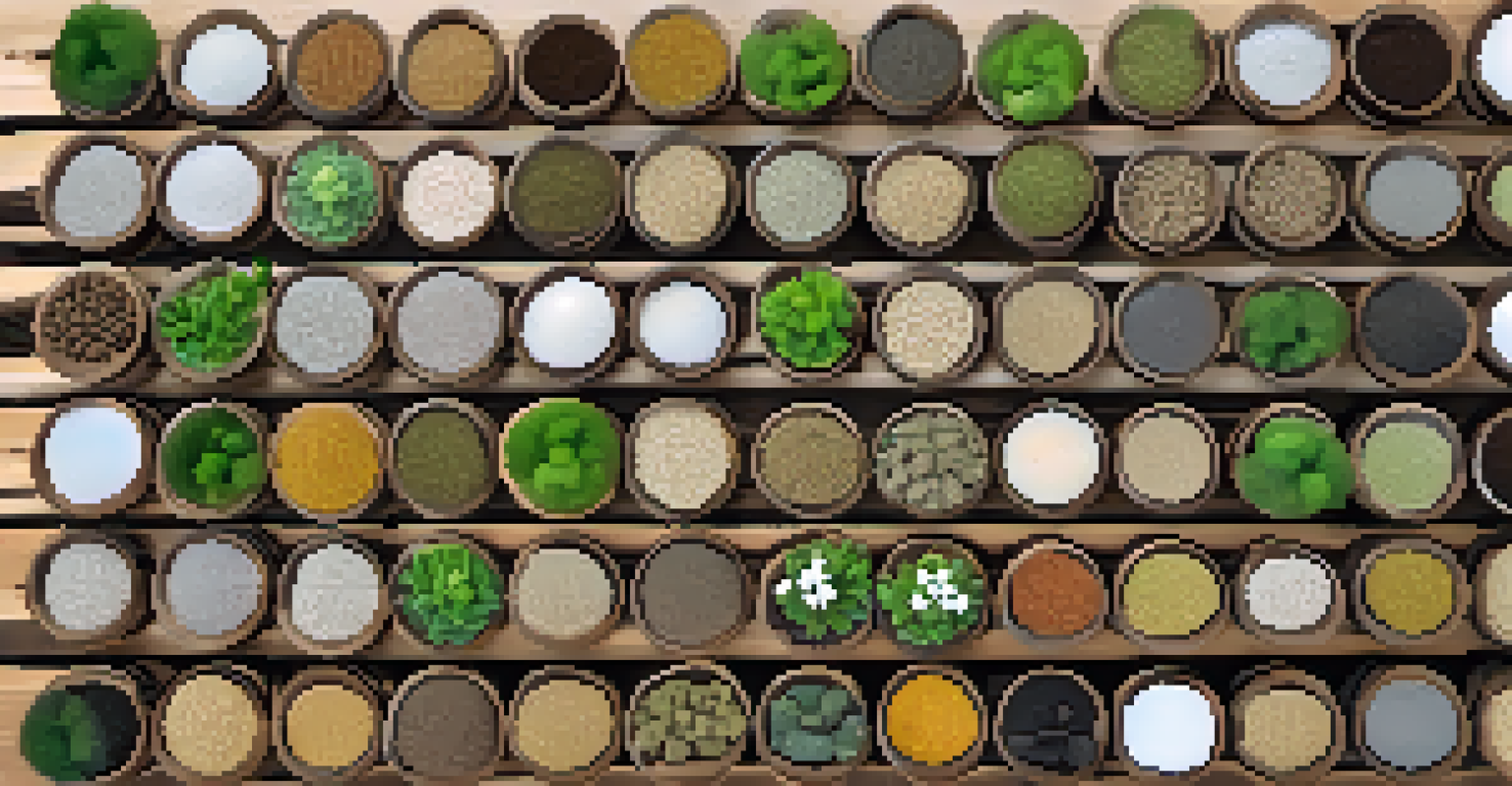Hydroponic Growing Media: Alternatives to Soil

Understanding Hydroponics and Its Growing Media
Hydroponics is a method of growing plants without soil, using nutrient-rich water instead. This innovative approach allows for more efficient use of resources and can lead to faster plant growth. While water is the primary medium, various growing media can support plant roots and retain moisture.
The best way to predict the future is to create it.
These media serve as a support structure for plants, providing stability while allowing for optimal water and nutrient absorption. Each type of media has its unique properties, which can significantly affect plant health and yield. Understanding these differences is key to successful hydroponic gardening.
In this article, we will explore several popular hydroponic growing media alternatives to soil, highlighting their benefits and best use cases. Whether you're a seasoned gardener or just starting, knowing your options will help you create a thriving hydroponic system.
Coco Coir: A Versatile and Eco-Friendly Option
Coco coir, made from the husks of coconuts, is a popular growing medium in hydroponics. Its fibrous texture allows for excellent drainage while retaining moisture, making it ideal for various plants. Additionally, coco coir is biodegradable and sustainable, appealing to eco-conscious growers.

One of the standout features of coco coir is its ability to provide aeration to plant roots, which is crucial for preventing root rot. This medium can be used as a standalone option or mixed with other media to enhance its properties. Plus, it's relatively affordable and easy to source.
Hydroponics Uses Soil Alternatives
Hydroponics allows for plant growth without soil, utilizing various nutrient-rich growing media for optimal growth.
When using coco coir, it's essential to monitor nutrient levels, as it can sometimes hold onto salts. Regular flushing with fresh water can help maintain a healthy balance, ensuring your plants thrive in this versatile medium.
Rockwool: The Go-To for Hydroponic Enthusiasts
Rockwool is another widely used hydroponic growing medium, made from natural rock that is spun into fibers. Its unique structure allows for excellent moisture retention and aeration, which helps promote healthy root development. This medium is particularly favored in commercial settings due to its consistency and reliability.
Gardening is a way of showing that you believe in tomorrow.
One of the advantages of rockwool is its pH neutrality, which means it won’t interfere with nutrient uptake. However, it’s crucial to soak rockwool in water before planting to ensure it is adequately saturated. This pre-soaking helps prevent stress on young plants.
While rockwool is efficient, it's essential to note that it is not biodegradable. This aspect may concern some growers, so considering recycling options or alternative media is wise. Overall, rockwool provides a dependable choice for those looking to optimize their hydroponic systems.
Perlite: Lightweight and Effective for Root Aeration
Perlite is a lightweight volcanic glass that is often used in hydroponics to improve aeration and drainage. This growing medium is particularly beneficial for plants that require a well-aerated environment, as it helps prevent compaction and allows roots to breathe. Its white, porous structure also reflects light, which can be advantageous in certain setups.
In hydroponics, perlite can be used alone or mixed with other media, such as vermiculite or coco coir, to enhance moisture retention. This versatility makes it a favorite among growers experimenting with different combinations to find the right balance for their plants. Plus, it’s chemically inert, meaning it won’t affect nutrient levels.
Coco Coir Offers Sustainability
Coco coir is a popular, eco-friendly medium that provides excellent moisture retention and aeration for plants.
However, it's essential to keep in mind that perlite can dry out quickly, so monitoring moisture levels is key. Regular watering and proper nutrient management are crucial to ensure your plants thrive in this airy medium.
Vermiculite: Retaining Moisture with Nutrient Benefits
Vermiculite is another mineral-based growing medium known for its ability to retain moisture and nutrients. This lightweight material expands when heated, creating a structure that holds water while allowing for good aeration. It's an excellent choice for seedlings and young plants that require consistent moisture.
One of the key benefits of vermiculite is its ability to hold onto essential nutrients, releasing them gradually to the plant roots. This slow-release feature can reduce the frequency of fertilization, making it easier for beginners to manage their hydroponic systems. Furthermore, it’s pH neutral, meaning it won’t alter the nutrient solution.
However, like perlite, vermiculite can become compacted over time, which might hinder root growth. Mixing it with coarser media can help maintain aeration, ensuring your plants receive the best possible environment for growth.
Hydroton: Clay Pellets for Drainage and Aeration
Hydroton, also known as expanded clay aggregate, consists of lightweight clay pellets that are great for hydroponic systems. These pellets create spaces for air and water, promoting excellent drainage and root aeration. Their round shape allows for easy movement within the growing system, making them versatile for various setups.
One of the standout features of Hydroton is its durability; it can be reused multiple times with proper cleaning. This not only makes it a cost-effective option but also reduces waste, which is excellent for environmentally conscious growers. Additionally, Hydroton is pH neutral, ensuring a stable growing environment.
Choosing Media Impacts Growth Success
Selecting the right growing media tailored to your plants' needs is crucial for a thriving hydroponic system.
However, it's essential to ensure that the pellets are adequately soaked before use, as they can be hydrophobic initially. Once saturated, they create an ideal environment for plant roots, making Hydroton a reliable choice for many hydroponic enthusiasts.
Choosing the Right Growing Media for Your Hydroponic System
When selecting the right hydroponic growing media, consider your plant type, growth stage, and personal preferences. Different plants have varying needs when it comes to moisture retention and aeration, so it’s important to match the media with those requirements. For example, leafy greens may thrive in coco coir, while root vegetables might prefer a mixture that includes perlite for better drainage.
Experimenting with different media combinations can also yield great results. Many growers find success in mixing various materials to create a custom blend that optimizes growth for their specific plants. Don’t hesitate to adjust your media as you learn more about what works best for your hydroponic garden.

Ultimately, the right choice of growing media can significantly impact your plants' health and productivity. By understanding the properties of each medium and how they interact with your nutrient solutions, you can create a thriving hydroponic system tailored to your gardening goals.
Final Thoughts on Hydroponic Growing Media
In conclusion, hydroponic growing media provide exciting alternatives to traditional soil, offering unique benefits for plant growth. Whether you opt for coco coir, rockwool, perlite, vermiculite, or Hydroton, each medium has distinct characteristics that can support your gardening journey. Understanding these options empowers you to make informed decisions that will enhance your hydroponic experience.
As you dive into the world of hydroponics, remember that trial and error is part of the process. Don’t be discouraged if some media don’t work as expected—gardening is a learning experience. Take notes on what works and what doesn’t to refine your approach over time.
With the right knowledge and a bit of experimentation, you can create a flourishing hydroponic garden that yields bountiful harvests. Happy growing!